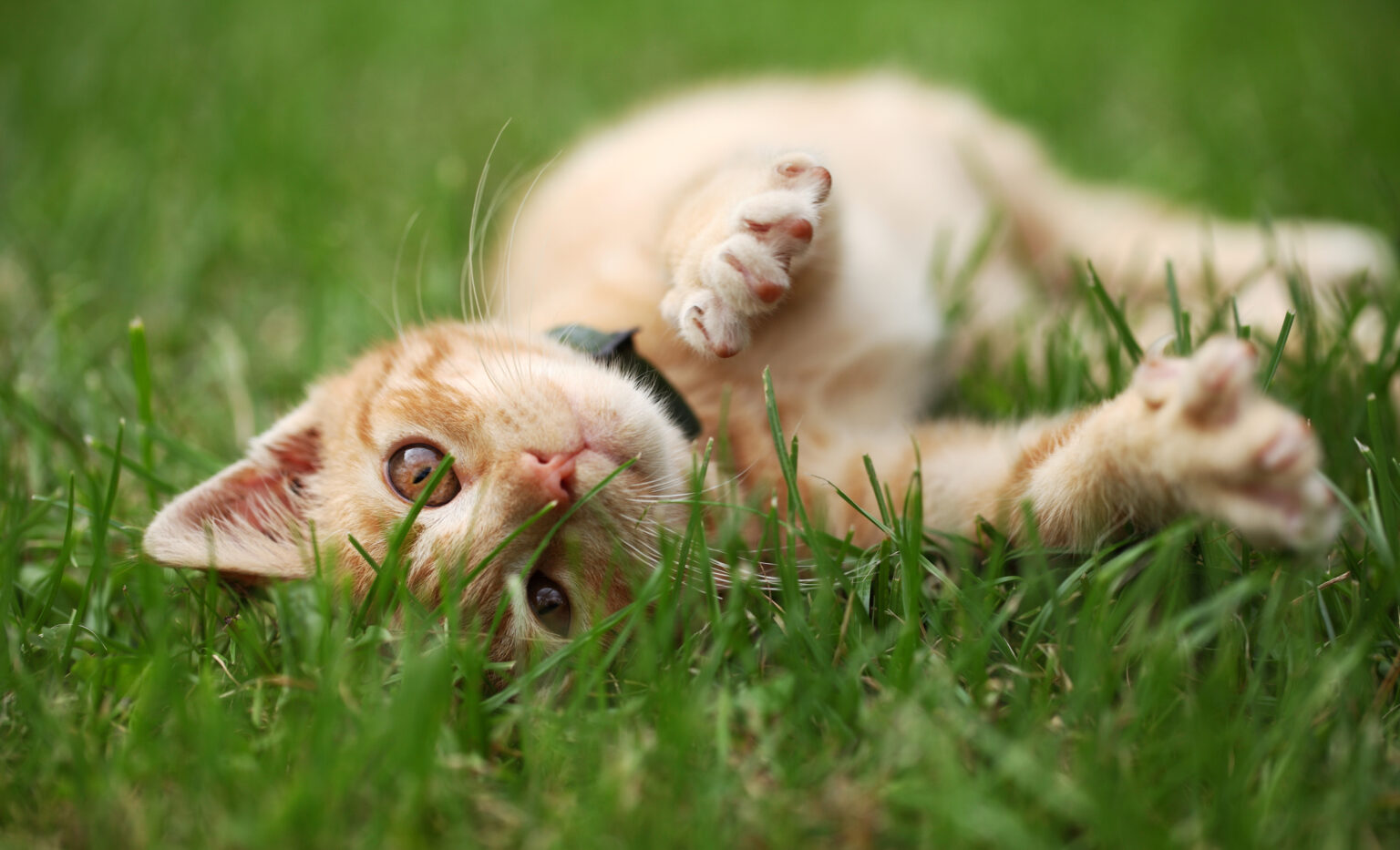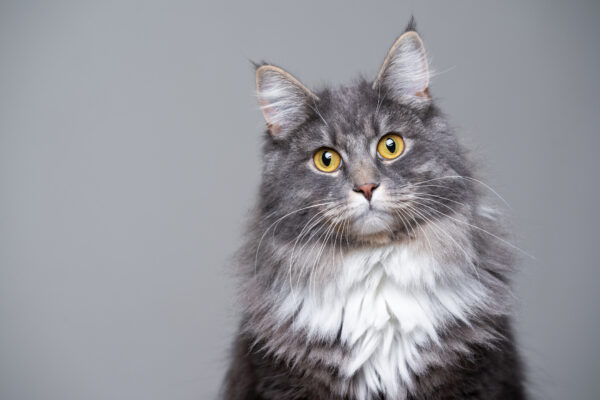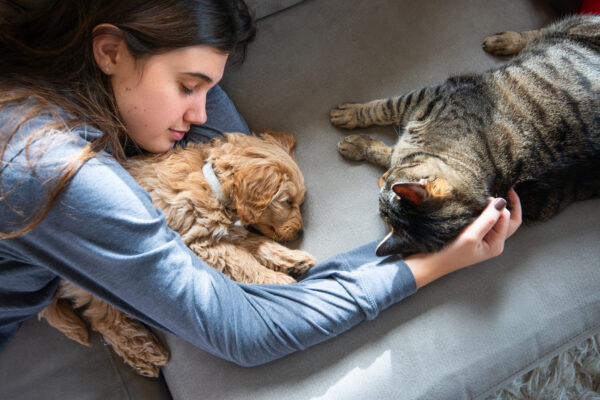Cats regularly tell you exactly what they want through their body language. But how to interpret their every move?
One minute it looks like they want a tummy rub, the next they’re clawing at you like you just insulted their mum. Sound familiar? We break down how to understand your cat’s body language so you can better understand what they need and communicate with them.
If you are worried about your cat’s behaviour, speak to your vet who can recommend animal behaviourists.
Happy
The key to understanding if your cat is happy? It’s all in the tail! If your cat’s tail is raised, with a slight curve at the top, then that’s a sign of greeting and they’re happy to see you.
If your cat is sitting in a relaxed posture, with a loose tail, closed mouth, rounded eyes (pupils may or may not be dilated depending on the room’s lighting) and ears in a natural position, then they’re happy and relaxed. If your cat is walking toward you with their head facing you with forward-pointing ears and looking relaxed, then there’s a chance they may be receptive to you petting them.
Exposing their belly is a sign of trust; however, some catveats apply. Just like we described at the beginning of this blog, the Venus Cat Trap (scientific name) is a classic indicator that a cat’s body language is not necessarily inviting certain behaviours. While an exposed belly when lying on their back is a sign of comfort and trust, your cat may not want to be touched at all. Approach with caution so that you can understand what your cat really wants.
How do you know if your cat wants something from you? Their laser-focus lands on you, along with these behaviours:
- Waving their tail gently and rhythmically, from side-to-side.
- Tail might be puffed up instead, or quiver slightly at the base.
- The meows… all the meows! If they’re after something in particular, this meow may sound different… louder, frequent, more urgent and less-pleasant sounding. Especially heard when they’ve decided it’s meal time.
- Rub up against you, possibly in a more exaggerated way than usual.
- Follows you around, weaving in and out of your legs; very responsive to your every move.
- They may climb up / jump onto you, or place their front paws on you to get your attention.
Worried
If your cat is crouching or hiding with their tail down or tucked between their legs, then they’re feeling worried. Stressful situations like loud noises, or changes in environment or the most regular causes – sometimes these can lead to anxiety in your cat.
If you’ve got a worried moggy on your hands, make sure they have safe spaces or dens to hide in, or get up high. In multi-cat households, make sure there’s no competition for resources; one litter tray, food bowl, and water bowl per cat plus one extra for choice is ideal.
If your cat is regularly sitting in a crouched position with tensed muscles; the tail tucked tightly into the body with ears pointing slightly back; head lowered and tucked into the body; and dilated pupils, then it’s likely feeling anxious. Check out our guide on spotting and managing anxious pets.
Angry
Some tell-tale angry cat signals include:
- Flicking tail = mildly annoyed kitty. Do not attempt to pet it.
- Lying down, teeth bared, body slightly rolled to one side = verging on angry kitty. Do not attempt to pet it.
- Arched back with raised hair and hissing or teeth bared = very angry kitty. Do not attempt to pet it.
The best thing to do when your cat is like this is to try to remove the trigger for the anger (e.g. chasing an intruder cat away, breaking up a fight, etc.). Conflict and aggression with other cats in the home can be managed with the Feliway Friends Diffuser which reduces tension and anxiety.
Our articles are not a replacement for face-to-face vet advice. It’s important to consult with your vet on a regular basis to raise any pet concerns that you may have.



